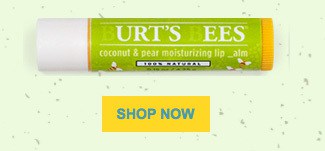There’s no doubt about it. If you want to run an outstanding marketing campaign, it has to be visual. To capture the hearts and minds of your fans, you have to catch their eyes first.
Senior marketers of every industry say visual content’s importance is increasing. And it’s increasing across the board – according to a report on how brands use photos and videos in the visual age, teams throughout organizations are using photos and videos to communicate.

If your brand wants to run a truly spectacular campaign, your teams must work together to share content that is visual and consistent. Every team that touches visual assets should share an integrated approach. A cohesive and visually engaging campaign is sure to grab and hold your fans’ attention. To see how this tip works, let’s take a look at an example of a brand that’s doing it right.
#BringBackTheBees
We love the Burt’s Bees campaign to drop the “b’s” and save the bees, or the ees, I should say. Every aspect of the campaign is visual, consistent and engaging.
First, the brand dropped the letter “b” from their lip balm packaging (lip alm packaging). The absence of the “b’s” – a tiny visual difference – is eye-catching.

The brand also encouraged fans to drop the letter “b” from their tweets to raise awareness and save the honeybees.
Did you know the _ee population is quickly becoming extinct? Help _ring _ack the _ees and skip the in your tweets. #BringBackTheBees
— Emily Owens (@epowens10) April 2, 2016
And to generate buzz (uzz), Burt’s Bees launched this anchor piece of visual content with actress Lea Michele:
The video has a strong call to action, with an interactive slide that allows you to click “post,” “plant” or “buy.” The video’s landing page is simple and extremely visual. It even includes a great infographic on the number of wildflowers pledged (for every tweet and every b-less lip balm sold, Burt’s Bees is promising to plant 1,000 wildflowers to help save the honeybees):

On social media, Burt’s Bees changed its name to “urt’s ees,” and shared content pointing back to the anchor video, like this photo:
A world w/o ees is a world w/o 1/3 of the eautiful foods we eat. Drop the letter and help us #BringBackTheBees! pic.twitter.com/1l6CpcNkQH
— urt’s ees (@BurtsBees) April 1, 2016
But perhaps the coolest part about the campaign is how the brand engaged with fans by tweeting gifs and personalized messages to say thank you. This is sure to generate some powerful word-of-mouth attention!
@LeaSampsell You just helped #BringBackTheBees w/ 1 tweet! https://t.co/vtyGUb9uKP pic.twitter.com/BMmslwysDo
— urt’s ees (@BurtsBees) April 5, 2016
The whole campaign is visual – from the packaging, to the anchor piece of video content, to the landing page, to the photos and videos on social media, to how the lack of the letter “b” in all of the campaign’s text content (including fans’ tweets) makes you do a double take. And equally as important, the campaign is cohesive. The imagery on the packaging, the landing page and social media is consistent. It conveys one unified message. If a fan has seen one piece of content (like the video), the next piece of content they see (like the lip balm packaging) will resonate. This approach is key to the success of the campaign, which is a hybrid sales and fundraising campaign. It typically takes several touches to convince someone to buy a product or make a donation. By integrating messaging across platforms, Burt’s Bees ensures every touch counts.
The Result: Burt’s Bees pledged to plant more than half a billion (illion) wildflowers, which means hundreds of thousands of people are dropping the letter “b” from their tweets and buying special edition lip balm (alm). The brand generated revenue, created brand awareness and saved honeybees, all at once. That’s a pretty high return on investment.
12 Tips for Creating a Cohesive Visual Content Marketing Campaign
So how can your brand emulate Burt’s Bees’ success? Let’s think back to that graph at the beginning. A number of those teams within the Burt’s Bees brand played a role in this campaign. They were successful because they had a unified strategy, and shared consistent visual content across platforms, from the packaging to social media. Here are some tips for running an integrated visual content marketing campaign.
- Start with one simple strategy for the whole campaign.
- Make sure your teams are all on the same page about tone, copy and imagery.
- Create a plan for imagery that will work across platforms – on your website, on social media, in print, even on your packaging, in your locations, etc.
- Produce a piece of anchor visual content, like the Burt’s Bees video.
- Create derivative content that points back to your anchor, like photos, gifs and short clips.
- Give every person who will need visual assets access to a centralized repository of approved visual content for the campaign.
- Make sure visual assets are tagged with metadata so team members can easily find and share what they need.
- Build a centralized landing page where you direct all your campaign traffic.
- Have a clear call to action.
- Follow a calendar to make sure teams are sharing messages and imagery in tandem.
- Share content regularly on social media, and take it to the next level by sharing content as a personalized thank you to specific fans.
- Track engagement visually with an infographic, to show your fans the difference they’re making.
Following these steps, you can grab your fans’ attention, hold it, and encourage them to get involved. The ROI of an integrated visual content marketing campaign is high. If you can harness the power of consistent imagery across platforms, you will run a fantastic campaign!



